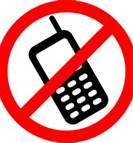Cell Phone Users More Likely to Speed and Drive Drowsy When Behind Wheel
 |
Study Shows "Do As I Say, Not as I Do" Attitude Prevails Among Nation's Drivers
AURORA, IL--Jan. 25, 2013: Motorists who use cell phones while driving are more likely to engage in additional dangerous behaviors such as speeding, driving drowsy, driving without a safety belt and sending texts or emails, according to a survey conducted by the AAA Foundation for Traffic Safety. Additionally, more than two-thirds (69 percent) of licensed drivers reported talking on a cell phone while driving within the last month despite the fact that nearly nine-in-ten respondents (89 percent) believe other drivers using cell phones are a threat to their personal safety.
"Ninety percent of respondents believe that distracted driving is a somewhat or much bigger problem today than it was three years ago, yet they themselves continue to engage in the same activities," said Peter Kissinger, President and CEO of the AAA Foundation for Traffic Safety. "More work clearly is needed to educate motorists on the risks associated with using a cell phone while driving, especially given that most Americans believe this problem is becoming worse."
Motorists who fairly often or regularly used their cell phones over the last month also reported that they engaged in additional risky behaviors. The research shows:
- 65 percent also reported speeding
- 44 percent also reported driving while drowsy
- 53 percent also reported sending a text or email
- 29 percent also drove without a safety belt
Conversely, drivers that reported never using a cell phone were much less likely to report additional risky behaviors:
- 31 percent reported speeding
- 14 percent reported driving drowsy
- 3 percent reported sending a text or email
- 16 percent drove without a safety belt
Despite the near-universal disapproval of texting and emailing while driving (95 percent), more than one-in-four licensed drivers (27 percent) reported sending a text or email at least once in the past 30 days, and more than one-third (35 percent) said they read a text or email while driving. Young drivers age 16-24 were even more likely with more than half (61 percent) reporting having read a text or email while driving in the past month, while more than one-in-four (26 percent) reported checking or updating social media while driving.
"Every time you get behind the wheel and engage in risky driving behaviors, you're endangering your life and that of others on the road, said Beth Mosher, director of public affairs for AAA Chicago. "Distracted driving crashes are preventable tragedies and we must all take personal responsibility to fully focus on the task of driving."
Driver use of cell phones impairs reaction times and roughly quadruples crash risk. Additionally, the National Highway Traffic Safety Administration reports that more than 3,000 people are killed and nearly half a million are injured each year in crashes involving distraction. This is likely an underestimate given the challenges associated with determining the role of distraction in crashes.
AAA and the AAA Foundation for Traffic Safety have long been leading advocates in educating motorists about the risks of distracted driving. AAA recommends that motorists turn off their phone before driving or pull over to a safe place to talk, send texts or use email. AAA also has launched a legislative campaign to advocate for a text messaging ban in all 50 states. To date, 39 states and the District of Columbia have adopted this key traffic safety measure and AAA expects all 11 remaining states to consider this legislation in 2013. To view, the texting law and other traffic safety laws in your state, visit Driving Laws.
The distraction data were collected as part of the AAA Foundation's 2012 Traffic Safety Culture Index, a nationally representative, probability-based survey of 3,896 U.S. residents ages 16 and older. The sample is representative of all U.S. households reachable by telephone or by regular mail. The questionnaire was made available in English and Spanish, and respondents were able to complete it in the language of their choice. The AAA Foundation for Traffic Safety provides additional details in the 2012 Traffic Safety Culture Index and as part of a report called Distracted and Risk-Prone Drivers.


